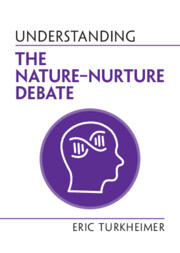Book contents
- Understanding the Nature–Nurture Debate
- Understanding Life
- Understanding the Nature–Nurture Debate
- Copyright page
- Reviews
- Contents
- Foreword
- Preface
- Acknowledgments
- 1 Genesis: Why Do We Care About Nature–Nurture?
- 2 The Worst Legacy of Francis Galton
- 3 Statistical Science and the Invention of Heritability
- 4 Reports of Galton’s Death Are Greatly Exaggerated
- 5 Thesis, Antithesis, Synthesis
- 6 Plomin’s Predictions and the Human Genome Project
- 7 GWAS Unchained, GWAS Unwound
- 8 Intelligence
- 9 IQ, Race, and Genetics
- 10 Nature–Nurture and the Possibility of Human Science
- Summary of Common Misunderstandings
- References and Further Reading
- Figure and Quotation Credits
- Index
- References
References and Further Reading
Published online by Cambridge University Press: 07 November 2024
- Understanding the Nature–Nurture Debate
- Understanding Life
- Understanding the Nature–Nurture Debate
- Copyright page
- Reviews
- Contents
- Foreword
- Preface
- Acknowledgments
- 1 Genesis: Why Do We Care About Nature–Nurture?
- 2 The Worst Legacy of Francis Galton
- 3 Statistical Science and the Invention of Heritability
- 4 Reports of Galton’s Death Are Greatly Exaggerated
- 5 Thesis, Antithesis, Synthesis
- 6 Plomin’s Predictions and the Human Genome Project
- 7 GWAS Unchained, GWAS Unwound
- 8 Intelligence
- 9 IQ, Race, and Genetics
- 10 Nature–Nurture and the Possibility of Human Science
- Summary of Common Misunderstandings
- References and Further Reading
- Figure and Quotation Credits
- Index
- References
- Type
- Chapter
- Information
- Understanding the Nature‒Nurture Debate , pp. 171 - 179Publisher: Cambridge University PressPrint publication year: 2024

